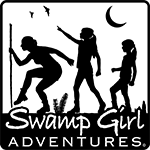This article was shared with us from Dr. Lewbart a Professor of Aquatic, Wildlife and Zoological Medicine at the NC State University of Veterinary Medicine where he works with a number of other Board Certified Specialists in Zoological Medicine that are on faculty. He performs research, clinical work, and teaches the next generation of veterinarians.
In June of 2013 Dr. Ken Lohmann at the University of North Carolina in Chapel Hill (UNC-CH) invited me to accompany him on a research trip to Galápagos to contribute to a health assessment of wild green sea turtles. I started working with Ken and his lab about 25 years ago as a clinician taking care of his research animals (sea slugs, spiny lobsters, and loggerhead sea turtles). In 2012 the UNC-CH, in partnership with the University of San Francisco in Quito (USFQ), opened a state-of-the-science laboratory on San Cristóbal Island in the Galápagos. The Galápagos Science Center (GSC) is academically and physically connected to a branch campus of the USFQ called the Galápagos Academic Institute for the Arts and Sciences (GAIAS). This is the only university facility in the Galápagos.
I have been to the Galápagos 19 times doing health assessment and wildlife conservation work on sea turtles, marine iguanas, three species of land iguanas, lava lizards, giant tortoises, nine species of sea birds, and the endemic Galápagos sea lion. My colleagues and I work closely with and under the direction of the Parque Nacional Galápagos (Galápagos National Park), where I hold numerous research and field permits. My investigative efforts have led me to serve on two PhD student committees and gain adjunct faculty status at the USFQ and the UNC-CH. At least once a year I am joined by my wife, who engages in field work and organized a Galápagos canine and feline spay/neuter clinic in 2016. Diane and I are frequently consulted on various veterinary matters and share our knowledge and expertise with local veterinarians and other animal care professionals.
Since 2016 I have led four NC State CVM student trips as part of an elective course (VMC-924) called Equatorial Zoology and Medicine in Galápagos. To date other NC State CVM faculty colleagues and I have brought 83 third year DVM students to the Galápagos for this experiential learning course that gives students the opportunity to conduct field research and learn from local scientists and naturalists. Five of these students are already authors on peer-reviewed publications from this research and several other papers are either in preparation or review.
To date my colleagues and I have produced 20 peer review publications from these efforts. Every one of these papers has at least one Ecuadorian author including students, park rangers, and senior scientists. I work as part of large international teams including scientists from Australia, Costa Rica, Ecuador, Germany, Italy, Japan, the United Kingdom, and the United States. We also have two papers in review and several others in progress.
I am in love with the Galápagos. From the first time I visited I knew I needed to work hard to return. Yes, the animals are iconic, and amazing, but I have made some dear friends in the many months I have spent there and look forward to seeing and working with them as much, and perhaps even more, than the animals. I am also continually impressed by the knowledge, determination, and resourcefulness of the biologists, park rangers, and other scientists I meet and work with there. We all have the same goal in mind; to conserve and protect this magical archipelago. It’s a bit of a balancing act because humans are not native to the Galápagos. Tourism and the resident population to support these tourists have an impact, although despite what you might read in the popular press, I don’t believe tourism is hurting the Galápagos to a significant degree. Sadly, most of the damage to Galápagos was done many decades ago, before tourism began (in the 1980’s), by the introduction of invasive animals, plants, and pathogens. I am hopeful that the work we are doing can help conserve and protect wildlife there.
Just 3 days before departing for Galápagos in March of 2020 with 25 students, another faculty member, and an endoscopy technician, where five different research projects had been carefully planned, the trip was cancelled due to the Covid-19 pandemic. Despite this I was still able to send valuable equipment and supplies to the Galápagos so that an important Galápagos tortoise pre-release health assessment an investigation on the impact of plastics on fish health could be performed. With the help of video, Zoom, and What’s App I was able to assist my Ecuadorian colleagues from afar. In many ways this was a really good thing as my colleagues were able to complete the work without my direct assistance and it was a huge confidence builder for them. I believe that ACZM diplomates from developed countries need to share knowledge and expertise so that our in-country colleagues can function independently and autonomously.
Conservation in Focus: Lewbart (adobe.com)



